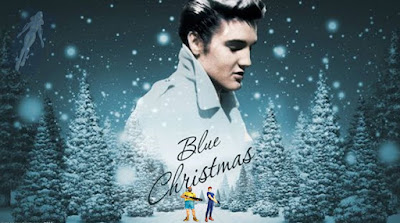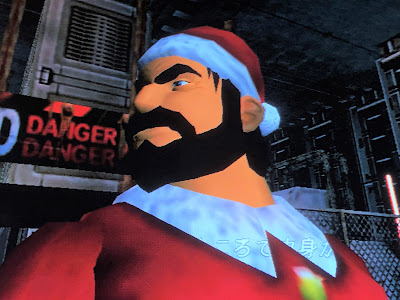In the dog days of the Dreamcast's reign, it became somewhat obvious and inevitable that Sega would take many of its most beloved franchises and port them to other systems. The pivot into becoming a major third party publisher was pretty much written in the stars, and Sega had the catalogue to pull off such a previously unthinkable task. The Sega of 2001 had a glittering array of first party gems that were screaming out to be unleashed onto the PlayStation 2, Xbox and Gamecube (and beyond), and nobody can deny that those first few years after the Dreamcast bit the dust were truly epic for Sega, as it left the hardware business and forged ahead as a major publisher.
"Sega is a company that has always dared to innovate and push this industry forward. Sega will continue to do so with its new strategy, and the result for consumers will be what you would always expect from a 'rules-breaker' like Sega - a library of pioneering, jaw-dropping content now available any way you want to play."
- Peter Moore speaking to IGN, February 2001
As well as arcade ports and first party games that were originally destined for the little white box, Sega took many of the Dreamcast's most iconic titles and either ported them to other platforms in-house, or farmed out responsibility to third parties. For the most part, this worked out pretty well for Sega and the games that made the leap often ended up having extra features imbued upon them. Sonic Adventure and its sequel, Skies of Arcadia, Ferrari F355, Crazy Taxi, Sega GT, Shenmue II, Rez, The House of the Dead, Space Channel 5...the list reads like a veritable smorgasbord of 'triple A' (Jim Sterling voice optional) experiences and franchises. Of course, this could also be said of the myriad third party releases that debuted on the Dreamcast; with esteemed titles such as Dead or Alive 2, Soul Calibur, MDK2, Headhunter and Resident Evil Code: Veronica all being ported. In the case of the latter, ported to death...which is ironic.

What I'm getting at is this - if you were a Dreamcast owner when the power cord was pulled from the console on that fateful day back in early 2001, you could quite easily have gone and bought a competing platform from any of the other major manufacturers and continued the Dreamcast party like it was 1999 (or 1998 if you were, y'know, in Japan). But what about the Dreamcast titles not only from Sega, but from third parties, that never made the leap from the sinking ship like so many digital rats? The titles that still to this day have never been ported to alternative platforms and can still only really be played on a Dreamcast, or an emulated Dreamcast, at the very least? Let's take a little look at 10 titles (in no particular order) that are effectively trapped on the Dreamcast, and never left for pastures new...
1. Seventh Cross: Evolution
We covered this little oddity a while back here at the Junkyard, so if you'd like to read a more in-depth analysis please feel free to check it out here. For brevity though, Seventh Cross is a game quite unlike anything else on the Dreamcast, in that you begin the game as a helpless organism that must adapt to survive the harsh alien landscape it is born into.
From slopping about in a primordial pool trying not to become lunch for other lifeforms, to escaping the aquatic cradle and embracing a more land-lubber-esque (yep, just made that term up) approach to this crazy little thing called life, Seventh Cross is a truly bizarre experience. The game was localised in English but never received a PAL release, and it's not really very difficult to see why. I can't imagine many people would have been champing at the bit to give this a go during the early years of the Dreamcast's life when stuff like Pen Pen TriIcelon was vying for attention on store shelves. Um.
2. Gundam Side Story 0079: Rise from the Ashes
The Dreamcast isn't lacking when it comes to games featuring mechs head butting each other after spilling each other's pints, and Gundam Side Story is one of the better 'simulation' style offerings. Unlike the arcade brawlers like Tech Romancer, and the battle arena shenanigans of Virtual On and Frame Gride (see below), Gundam Side Story allows the player to slip inside the cockpit of a building-sized mech and take part in a first person tactical battle against enemy units on sprawling maps.

Cast your mind back to stuff like Iron Soldier on the Atari Jaguar, but add vastly superior graphics and a really quite engaging storyline and you're on the right track. While Gundam Side Story may look like a pretty basic military shooter, there's a huge amount of tactical play involved, and giving orders to your fellow mechs on the battlefield is an integral part of proceedings. Add to the mix a healthy dose of ranged combat and hand-to-hand mech fisticuffs and this is about as close to Pacific Rim as you can get on Dreamcast. Sort of.
3. Armada
Armada is a game that's quite difficult to categorise. In some ways it's an arcade shoot 'em up, in other ways it's almost an RPG, while in others it could be classed as a multiplayer couch co-op experience. Either way, it is an intriguing title that never experienced much in the way of success due to the fact that it was only released in the United States. A PAL release was scheduled and cancelled, as was the planned sequel. We have looked at Armada briefly in the past, check out our article featuring it here.

Essentially a top down space opera style adventure, in Armada you spend your time traversing the vast distances of the cosmos, plotting courses with co-ordinates and battling marauding alien fleets on the way. You can hire allies to help you fight off the alien threats you encounter throughout your journey and the game is playable by up to four people on one Dreamcast. It's almost like a couch co-op forerunner to stuff like Helldivers, where having some human comrades to assist you will make the game much more manageable (and enjoyable). It's also worth mentioning that Armada was originally conceived as an online multiplayer experience, but that option appears to have been removed during development. Still, it's an interesting and ambitious title that could have been way more popular had it been released with an online component as originally intended.















































